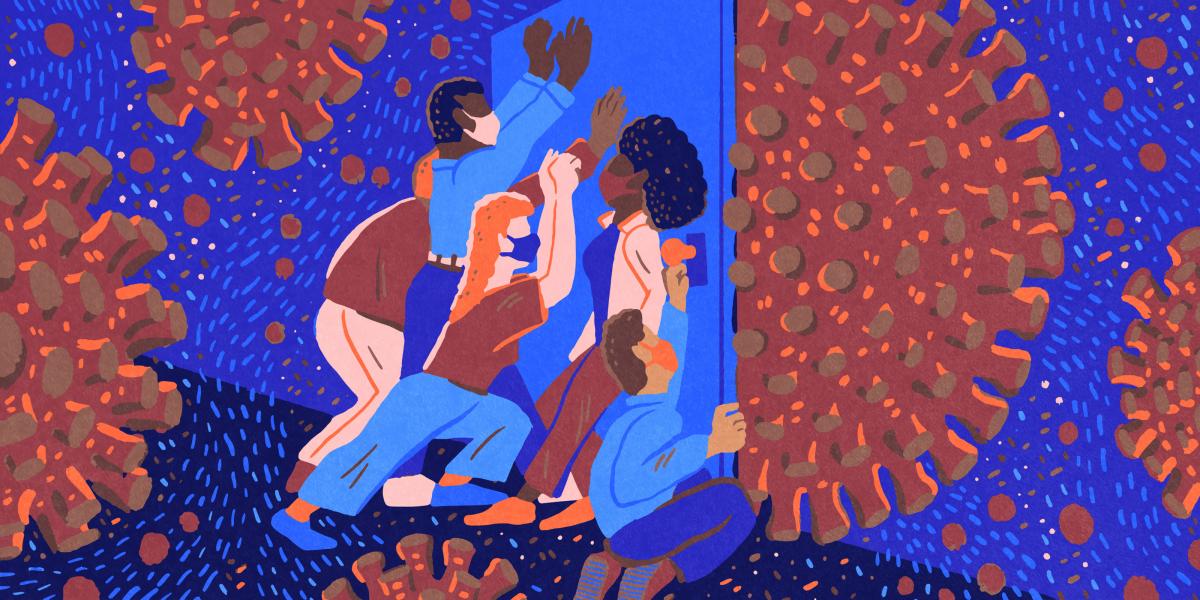How to Revitalize the U.S. Public Health System
We must build political will to transform our hobbled system to address today’s health threats.
Let me open with an apology. And end with a vow.
I am sorry that our country let our public health system down. In an age when our every purchase, every heartbeat can be monitored electronically, the nation never modernized our ability to track, test, or investigate diseases.
COVID-19 has dramatically highlighted this gap.
Coronavirus-related deaths and illnesses were tallied by hand and faxed to a maze of agencies. We can rapidly test our pets’ DNA, but our public health laboratories were forced to beg for basic supplies and staffing while attempting to stem the greatest pandemic threat in a century. When public health leaders have called attention to scientific needs and solutions, they have been picketed, fired, or driven out of their jobs in unprecedented numbers.
This is the system intended to keep us healthy, well, and out of the sick-care industry. It’s no wonder the U.S. has the highest number of cases and deaths from COVID-19. This is not underpreparedness. It’s more fundamental. It is a hobbled system that is not allowed to keep up to date with today’s health threats.
Our leading cause of death? Chronic diseases, most of which are preventable. Six in 10 Americans have one—cancer, heart disease, obesity, diabetes, etc.—which saddles our economy with $3.5 trillion in health care costs annually and supercharges COVID-19’s harsher impacts. Layered on top of this vulnerability, deeply entrenched systemic racism (not genetic differences) has caused enormous health disparities in almost all these diseases. While we have recently learned that Black Americans are at least three times as likely to die from COVID-19 as whites, we have long recognized disproportionate rates of heart disease, hypertension, maternal and infant mortality, and many more adverse outcomes among Blacks. Significant health gaps also exist for Indigenous and other people of color. Before the pandemic, all these worsening conditions explained the appalling shift in U.S. life expectancy with Americans starting to live shorter, less healthy lives.
Despite having one of the best, most modern and technologically advanced health care systems in the world, this country is one of the least healthy of all wealthy nations. This is true for all races in this country. The underlying chronic condition that puts us at greatest risk? Our under-resourced, antiquated public health infrastructure.
The National Academy of Sciences, national commissions, and others have sounded warnings for the past two decades. None were heeded. After each health crisis—SARS, anthrax, H1N1—we see bursts of funding, given as short-term Band-Aids. After 9/11, health departments were connected to the internet and provided with better tools and training. But just a few years later, the budget cuts began. By the time COVID-19 hit our borders, public health agencies around the country had eliminated over 50,000 positions.
Those short-term funds did not build the public health defenses we needed to fight everyday health threats, like health disparities, chronic diseases, injuries, suicide, substance misuse, mental health, and violence.
Imagine if we adequately invested in public health and transformed our disease prevention capabilities to tackle the everyday as well as the exotic threats to our health.
What does that look like? We revamp CDC and other health agencies to shift from making suggestions to mandating core health standards and services for all communities so everyone is assured a base-level of protections and vital conditions. Those health agencies track and take action to prevent diseases and conditions, including establishing evidence-based, equity-driving policies and programs. They are transparent and held accountable for assuring disparities are eliminated.
Advocacy is an important tool for making this happen. We need to fight side by side with those who are on the losing end of disparities and address those inequities once and for all. We need to build political will for long-term investment in a strong, effective, and trusted public health system in every community.
The Bloomberg School has made advocacy an equal pillar to its teaching, service, and research commitments. We practice what we preach by both investigating health problems and inspiring solutions. But transforming the U.S. public health system requires national commitment. The School’s Center for Public Health Advocacy aims to bring together leaders from all walks of life— from the business community to Black Lives Matter—in a call for action.
Together, we must vow to revitalize public health. That is how we create a healthier, resilient, and equitable nation. For everyone.
